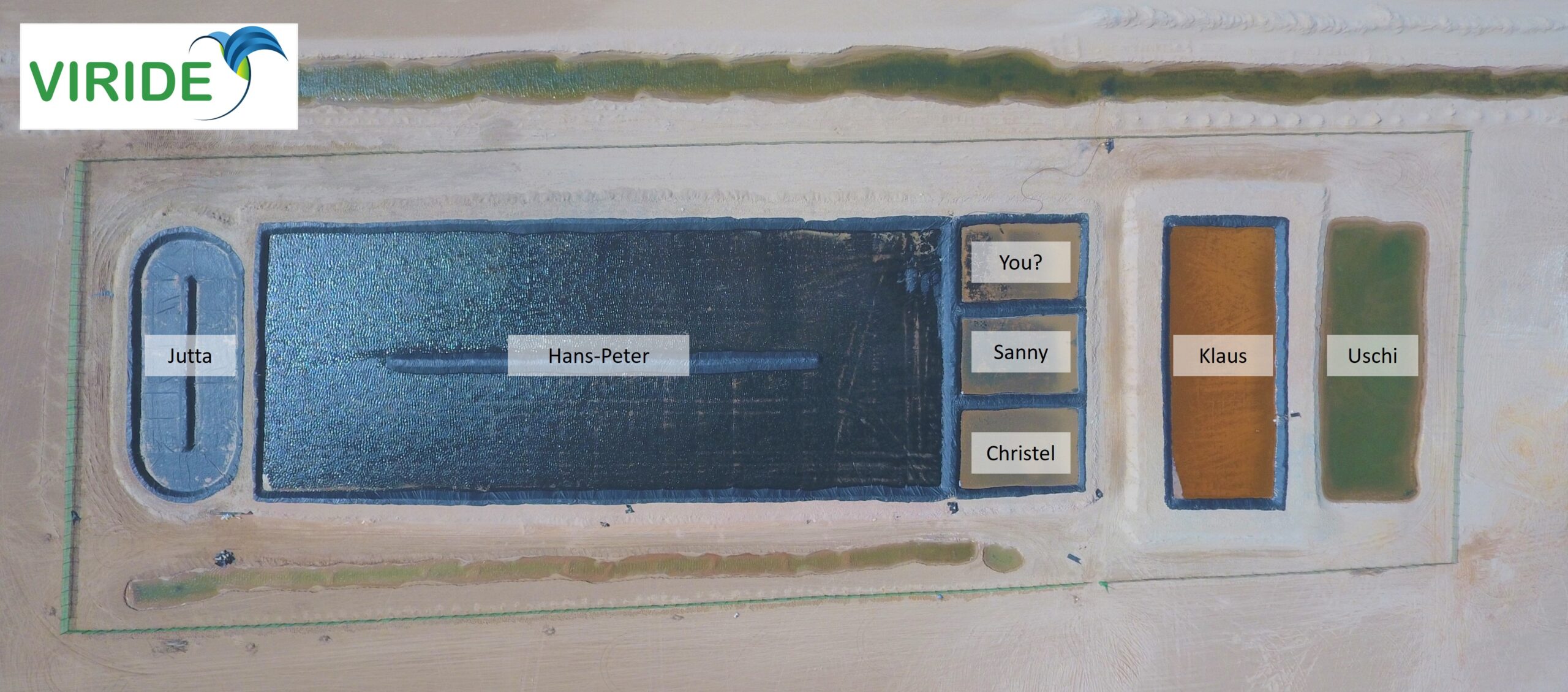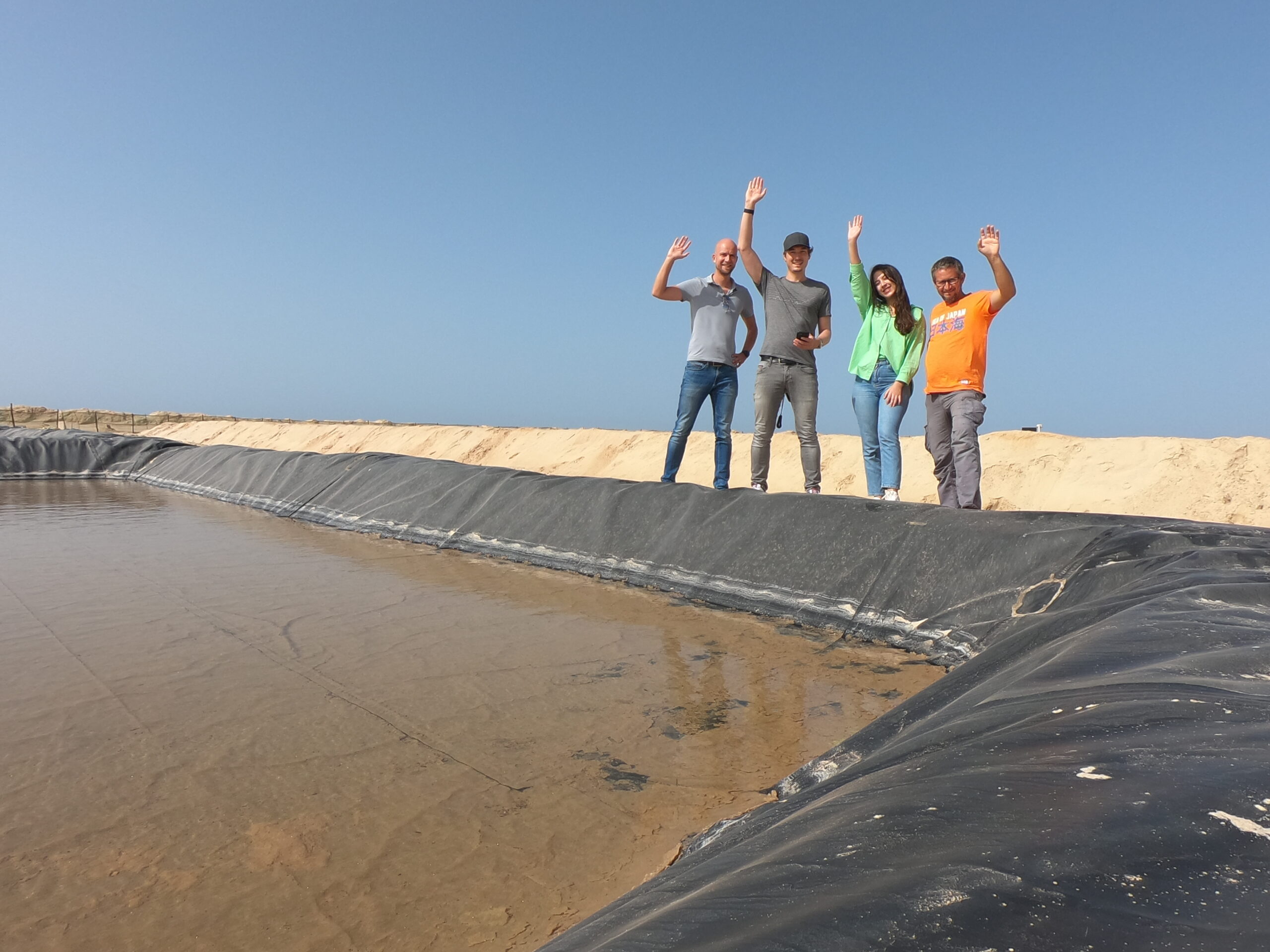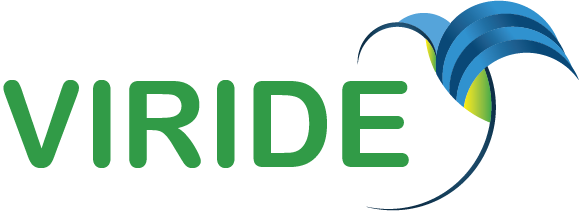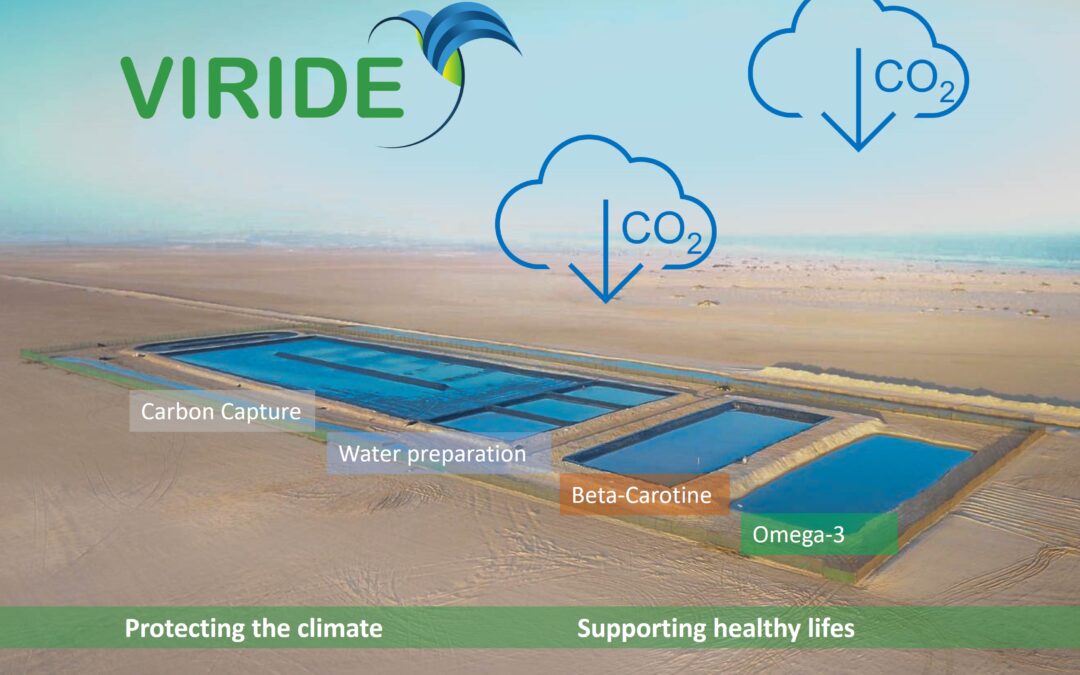Seawater pools in the middle of the Sahara! This is the pilot plant of Viride in Morocco. Its dimensions: about 50 meters wide and over 200 meters long – making it quite a large facility, with about 10,000 square meters spread over 7 basins. Its goal is to optimize the cultivation of microalgae in the Moroccan desert near the Atlantic Ocean. After all, if it works there, the facility is a prototype for rollout to many warm reagions that are short of freshwater around the world, yet that are near the ocean.
So far, so good. But why the are we doing this? The image already reveals a few hints. Input for the growth of microalgae is not only sea water, but also CO2. The unicellular algae take this from the air and bind it in the form of biomass by means of photosynthesis through cell division. Depending on the type of algae, different substances are produced: the alga Dunaliella produces many beta-carotenes, the alga Nannochloropsis is rich in omega-3 fats, especially EPA.
So microalgae contain valuable substances: Besides valuable colorants, these are mainly proteins, fats and residues (carbohydrates, ash). So if we succeed in producing large amounts of proteins and fats in the desert with salty water, this will solve a whole series of challenges our world is facing. Because today we are experiencing a shortage of proteins, especially vegetable proteins, which are more sustainable. And in the area of polyunsaturated fatty acids, we still have to resort to fish, although they contain omega-3 only because of the algae they consume. Therefore, algae at least partially avoid overfishing of the oceans.
But the topic of CO2-neutral fuels is also conceivable. After all, fats or oils are the basis for many sustainable fuel variants that have been well researched. The only thing missing is biomass in large quantities. A cultivation of microalgae for the production of protein and oil is therefore a good solution for two really urgent problems of our time – namely SDG #2 Zero Hunger and SDG #13 Climate Action.

Funding for our pilot plant comes from our community of supporters. They are both convinced that algae is a solution to the problems of our time, but they also believe that algae is a growing market and can become a profitable business model. Because we as Viride are very grateful to our community, we named our first tanks directly after them. Thank you, investment community!
Currently [in the fall of 2022], we are working on increasing the productivity of our basins and optimizing the harvesting of algae. These are important components for the upcoming expansion of our facilities. For this, we have a strong team of engineers, bio/chemists and operation designers on site who are working on optimization on a daily basis.

The team is growing steadily, and we have now reached a 50:50 split between male and female employees. Our laboratory assistants in particular are graduates of Moroccan universities with the best master’s and PhD degrees.
We expect the first revenues from algae in the first half of 2023. This will require, in particular, the establishment of a solid power supply with the help of solar systems and the expansion of water pumps and water circulation. Further investments in Viride are therefore necessary. Here, too, we rely on our community! Together we make the algae grow – save CO2 in production and bind CO2 through the growth of the valuable biomass.
If you have any questions about our pilot plant, microalgae or Viride, feel free to contact us via the contact page! We are looking forwart to hearing from you.
Your Viride Team


